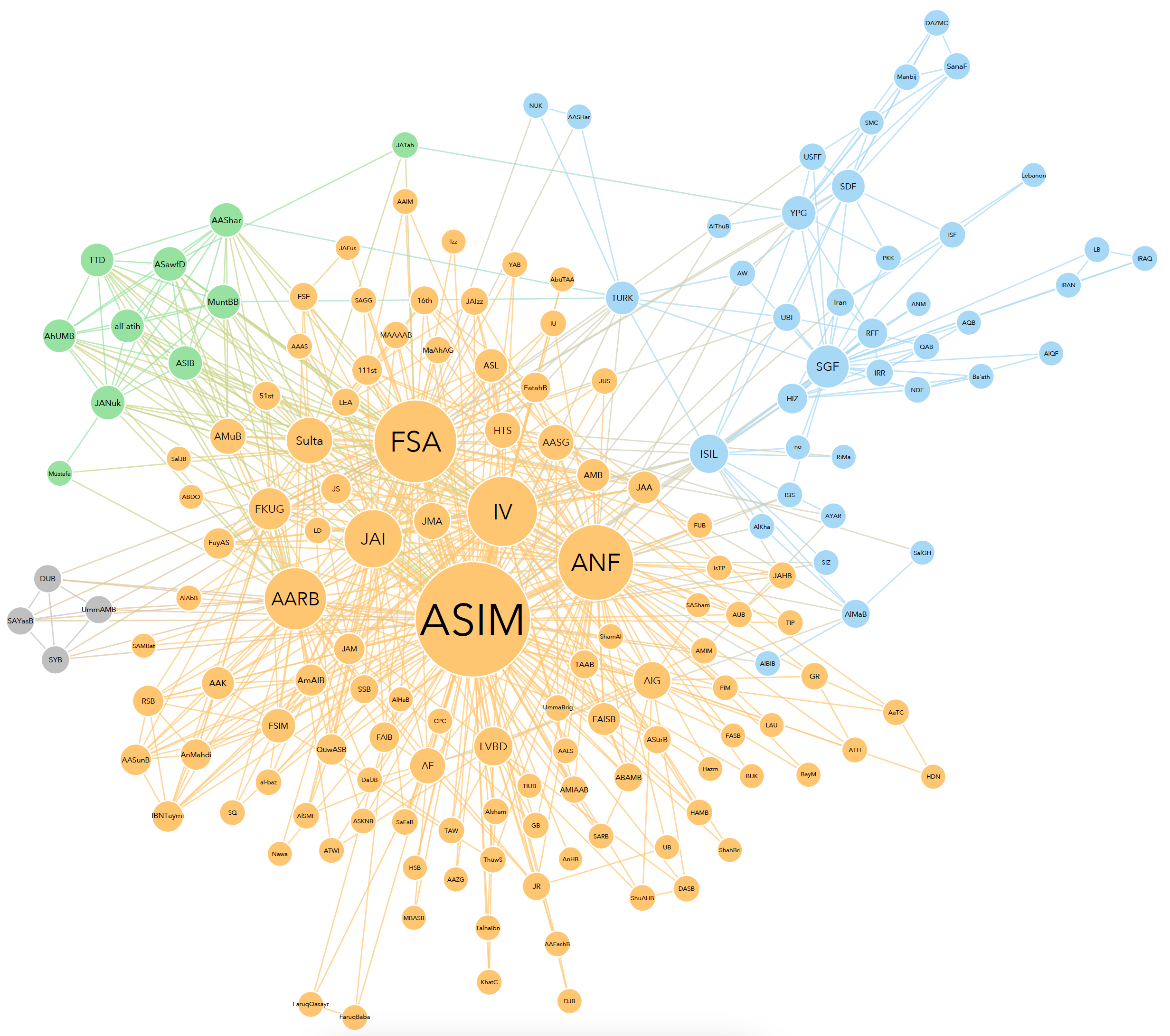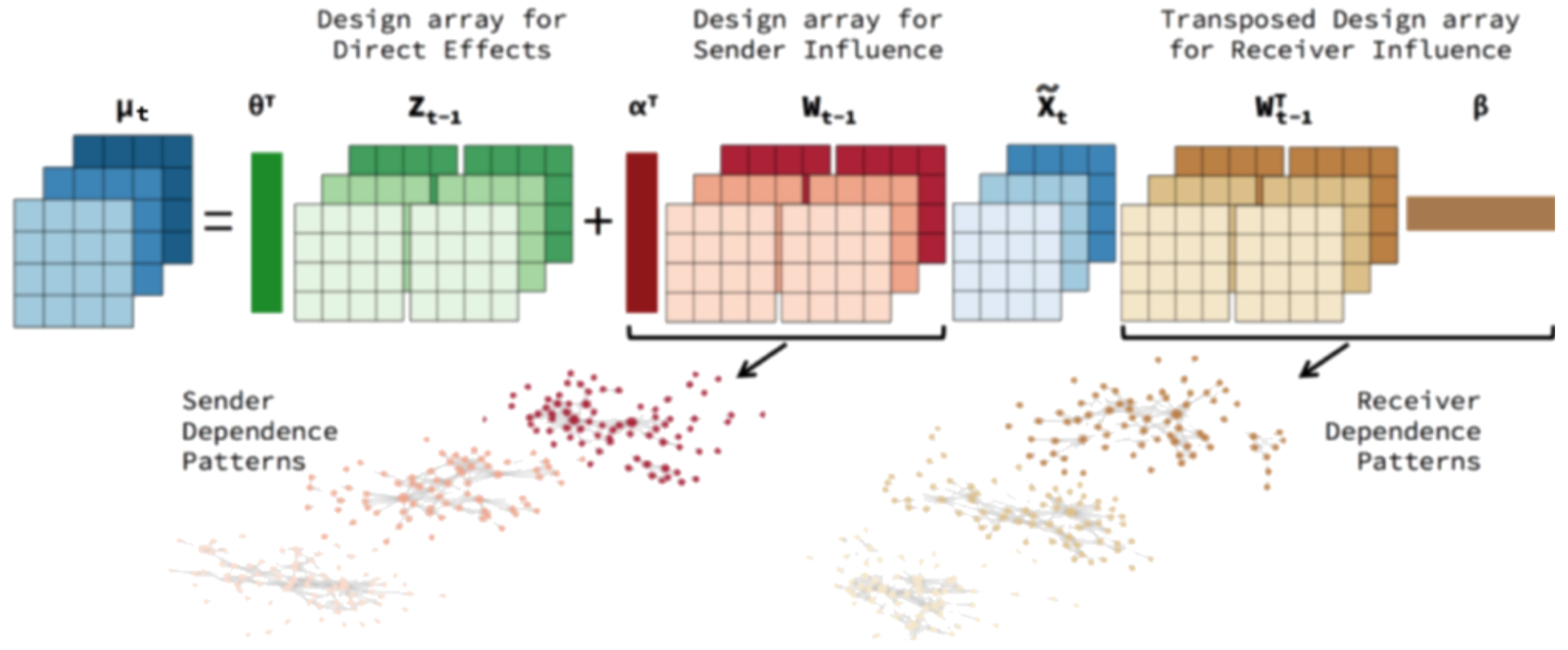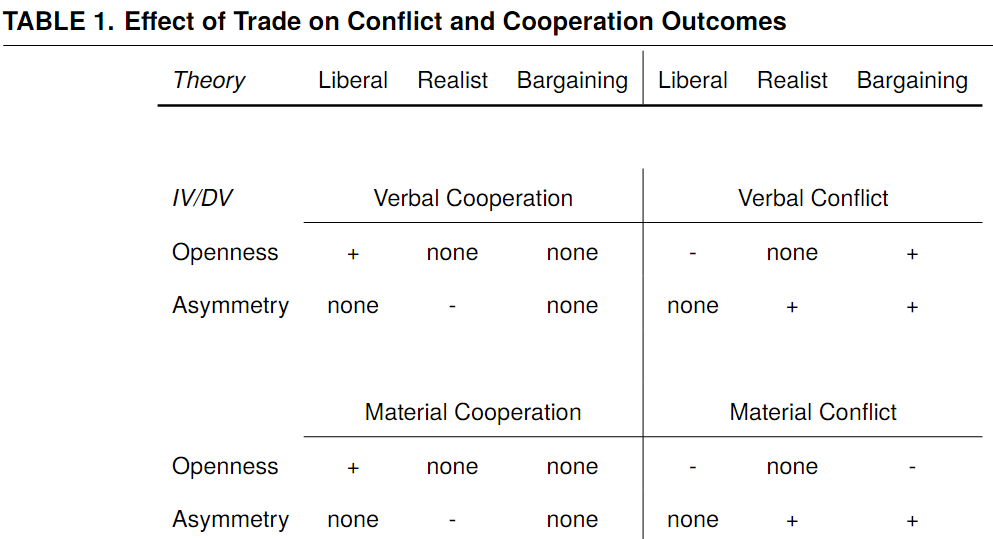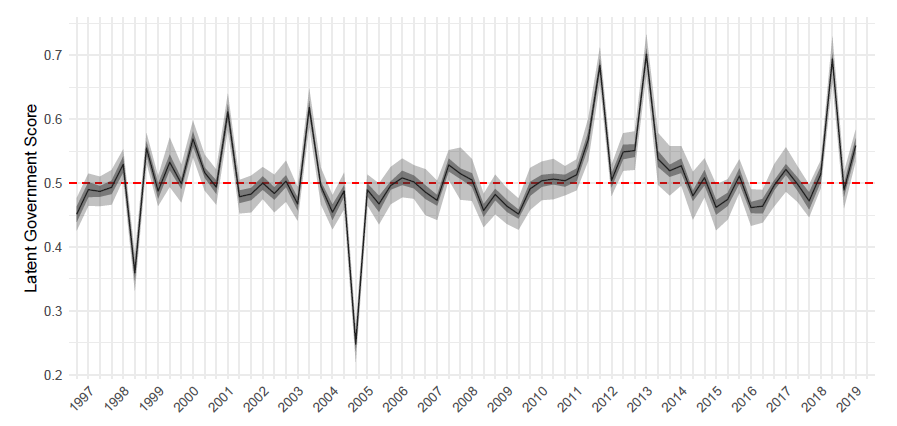
- Re-imaging data collection: the promise and pitfalls of using non-state actor media for large-scale event datasets – with Emily Gade, Bree Bang Jensen, Kai Ping Leung, Michael Gabbay, Mohammed Hafez, Emily Thomas, Kayla Salehian, Ava Sharifi, Tara Farkouh, Arica Schuette, Willa Jeffers, Ben Lefkowitz. Revise & Resubmit at American Journal of Political Science.
-
Non-state actors produce their own media with a scope and frequency unmatched by conventional news. Specifically, can rebel media---which should be understood as propaganda---be used in creating *reliable* event data sets of ongoing or recent conflicts? We suggest that while rebels do lie, there are certain types of data---where rebels are on the ground, and with whom they fight and collaborate---that will be more accurately represented in rebel-produced media than in news data. Using a novel dataset coded from some 28,000 rebel social media posts during the Syrian civil war (2012-2018), we devise a novel approach to reconstructing networks from event data using latent variables approaches, and test our dataset against existing news-based data sources. Our findings reveal that rebel media can predict many of the relationships found in news media nearly as well as news media can predict itself, suggesting that rebel-generated information is a valuable source of information for understanding conflict and collaboration dynamics in conflict settings.
-

- Decomposing Network Influence: Social Influence Regression – with Peter D. Hoff. Revise & Resubmit at Political Analysis.
-
Understanding network influence and its determinants are key challenges in political science and network analysis. Traditional latent variable models position actors within a social space based on network dependencies but often do not elucidate the underlying factors driving these interactions. To overcome this limitation, we propose the Social Influence Regression (SIR) model, an extension of vector autoregression tailored for relational data that incorporates exogenous covariates into the estimation of influence patterns. The SIR model captures influence dynamics via a pair of n x n matrices that quantify how the actions of one actor affect the future actions of another. This framework not only provides a statistical mechanism for explaining actor influence based on observable traits but also improves computational efficiency through an iterative block coordinate descent method. We showcase the SIR model's capabilities by applying it to monthly conflict events between countries, using data from the Integrated Crisis Early Warning System (ICEWS). Our findings demonstrate the SIR model's ability to elucidate complex influence patterns within networks by linking them to specific covariates. This paper's main contributions are: (1) introducing a model that explains third-order dependencies through exogenous covariates and (2) offering an efficient estimation approach that scales effectively with large, complex networks.
-

- Decisive or Distracted: the Effects of United States Constraint on Security Networks – with Ha Eun Choi, Max Gallop and Scott de Marchi. Revise & Resubmit at British Journal of Political Science.
-
The growing importance of China in global politics cannot be understated. What makes the country's rise even more interesting is that in the last two the United States has been involved in a pair of wars in the Middle East. These actions required large commitments, not just of blood and treasure, but also of attention and resolve. We examine how third parties respond to the United State's focus on conflicts in one region of the world, in terms of their cooperation in the economic and diplomatic spheres. To do so, we develop a novel measure of US distraction, as well as novel network based measures of economic and diplomatic cooperation or alignment. We seek to test the theory that when the US is more distracted, other states will be more likely to cooperate with the United States' principal rival, China. We find that such cooperation is more likely in the diplomatic sphere than the economic one. However, when we look at how different types of states react to US distraction, we find that across both measures democracies generally respond by moving farther away from China, while non-democracies move closer to China.
-

- Parsing Co-dependence in Trade and Conflict – with Cindy Cheng and Ha Eun Choi.
-
Understanding the relationship between trade and conflict has always been important but it has never been more pressing in the wake of rising trade tensions between the today's most powerful economies. In this paper, we break new ground by first, examining the role cooperation plays in explaining the relationship between trade and conflict across different theoretical frameworks (liberal, realist and bargaining). Second, by exploring how both verbal and material forms of conflict and cooperation affect trade outcomes, we are further able to test at least one possible pathway through which trade and conflict affect one another. Finally, by using multilinear tensor regression analysis, we account for problems with endogeneity and higher level dependencies (e.g. reciprocity and transitivity) that the scholarship has long struggled to address. We find evidence for a realist understanding of the relationship between trade and conflict: trade asymmetries and verbal and material conflict simultaneously affect each other.
-

- Which Way to Peace? Estimating Directionality in Conflict Event Data – with Cassy Dorff.
-
Today civil conflict is characterized by multiple warring parties with different motivations, capabilities, and patterns of behavior. Current research on intrastate conflict focuses heavily on questions related to the military behavior of these armed actors and battlefield dynamics---such as in studies on the efficacy of counterinsurgency campaigns, the causes of civilian victimization, or conflict duration. We argue that despite this focus on battle level processes, political science lacks a clear, generalizable measure of offensive and defensive battlefield behavior to capture which actors initiate conflict at the micro-level. Although significant advances have been made in the collection of event data on intrastate conflict, currently available event data does not record information about which actor initiates a clash. Instead, these data only record which two (or more) actors engage in a battle at any given time. We present a novel latent variable framework that parses directionality from event data via a network decomposition approach. We apply this approach to the Nigerian Civil conflict to investigate the relationship between directionality and civilian victimization. We run our model across all conflict based events recorded in Nigeria from 1997 to 2019 and evaluate how civilian victimization (in terms of both intensity and tactics) changes as a function of whether or not the government is on the defensive or offensive.
-
